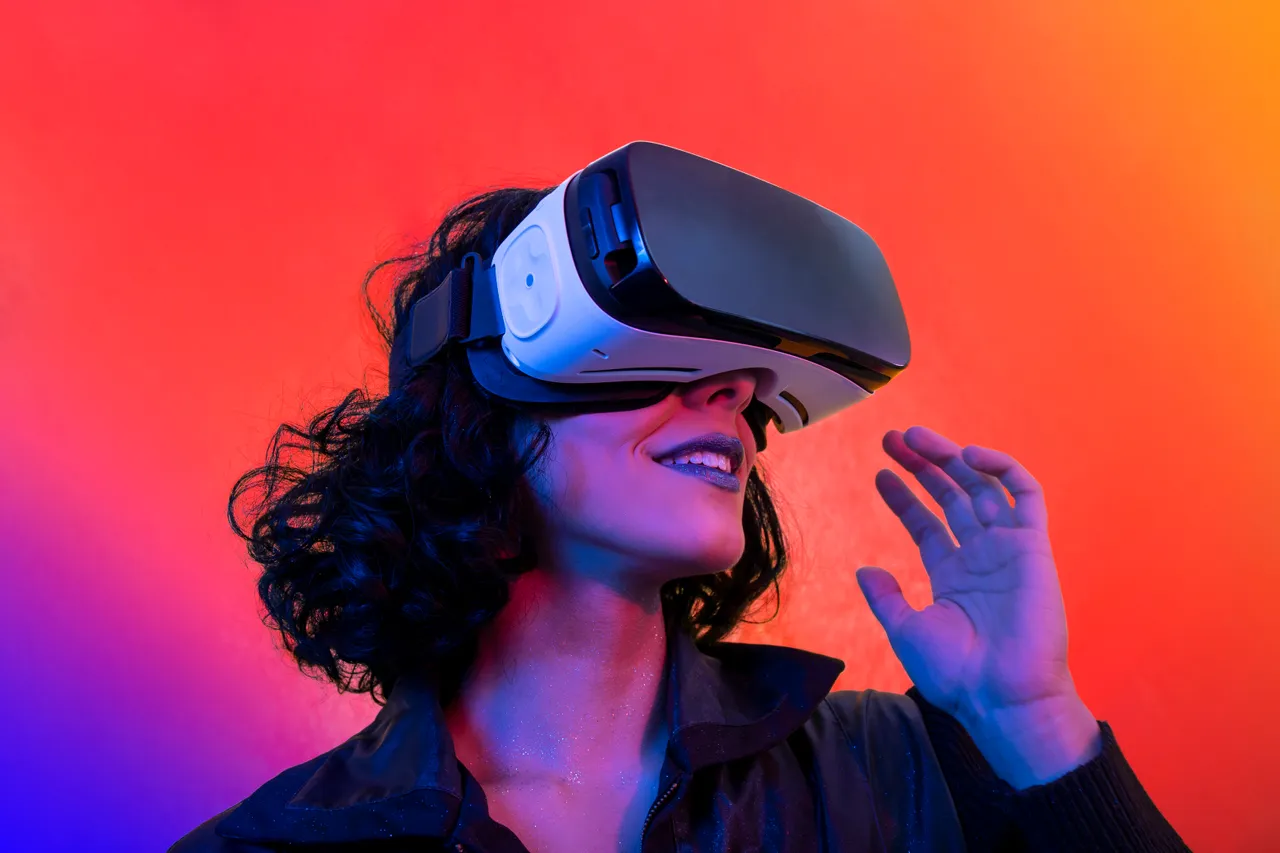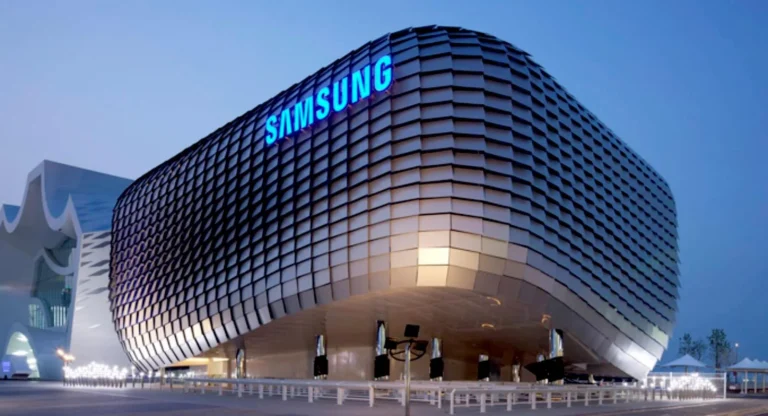Introduction to Virtual Reality (VR)
The Uncharted Future Awaits in the World of VR: Step into a world where imagination knows no bounds, where the lines between reality and fantasy blur, and where you can explore uncharted territories without ever leaving your seat. Welcome to the captivating realm of Virtual Reality (VR). This groundbreaking technology has taken the world by storm, revolutionizing industries, transforming entertainment experiences, and reshaping our perception of what is possible. From gaming enthusiasts seeking thrilling adventures to professionals looking to enhance their skills, VR has become a gateway to limitless possibilities. So fasten your seatbelts as we embark on an exhilarating journey into the uncharted future of virtual reality! Are you ready? Let’s dive in!
Table of Contents
The Evolution of VR Technology
Virtual Reality (VR) has come a long way since its inception. It has evolved from simple 3D images to immersive, interactive experiences that can transport users to entirely new worlds. The technology behind VR has also advanced significantly, allowing for more realistic and seamless virtual environments.
One of the biggest developments in VR technology is the improvement in graphics and display quality. Early VR systems often had pixelated or blurry visuals, which could be distracting for users. However, with advancements in screen resolution and refresh rates, modern VR headsets can now deliver stunningly detailed and lifelike visuals.
Another important aspect of VR technology is tracking and motion control. In the past, tracking was limited to basic head movements, but now it includes full-body tracking as well as hand gestures thanks to sensors placed on the headset or controllers. This allows users to interact more naturally with virtual objects and enhances their overall immersion.
Furthermore, there have been significant improvements in audio technology for VR experiences. Spatial audio techniques create a fully immersive sound environment that matches what users see in the virtual world. This adds another layer of realism and helps enhance the overall sense of presence within the virtual space.
Additionally, advancements in computing power have made it possible to run more complex simulations and render high-quality graphics in real-time. This means that developers can create increasingly detailed and interactive virtual environments that were once only imaginable.
As hardware continues to improve at an exponential rate, so does software development within the field of VR. There are constantly new applications being developed across various industries – from gaming and entertainment to education and healthcare – pushing boundaries further each day.
In conclusion,
The evolution of VR technology has transformed how we experience digital content by providing us with unprecedented levels of immersion and interactivity. From humble beginnings with blocky graphics to today’s highly realistic simulations, there seems no limit as to where this exciting technology will take us next! So strap on your headset and get ready to explore the uncharted future of virtual reality.
Advantages and Disadvantages of VR
Virtual Reality (VR) technology has revolutionized the way we experience digital content. With its immersive capabilities, it offers numerous advantages that enhance various aspects of our lives.
One key advantage of VR is its ability to transport users to different virtual environments, allowing them to explore new worlds without leaving their homes. This opens up endless possibilities for entertainment, education, and even therapy. Imagine being able to visit historical landmarks or dive into the depths of the ocean from the comfort of your couch! The level of immersion provided by VR can create truly unforgettable experiences.
Another advantage is the potential for training and simulation in various industries such as healthcare, aviation, and manufacturing. VR allows professionals to practice complex procedures in a safe and controlled environment, reducing risks and improving skills before applying them in real-life situations.
However, like any technological advancement, there are also disadvantages associated with VR. One major concern is the risk of physical discomfort caused by prolonged use. Some users may experience symptoms such as dizziness or motion sickness when using certain types of headsets or engaging in highly interactive virtual experiences.
Moreover, there are concerns regarding privacy and security when it comes to sharing personal data within virtual environments. As more individuals embrace this technology, it becomes crucial to ensure that proper safeguards are implemented to protect user information.
In conclusion,
Virtual Reality presents both exciting opportunities and challenges for society at large. Its advantages range from enriching entertainment experiences to enhancing professional training methods across industries. However,it’s important that we address concerns relatedto physical discomfortand safeguard personal datain order tounleashthe full potentialofthis emergingtechnology.
Through continuous innovation and responsible implementation,Virtual Reality has immense potential to shape our future in ways we haven’t yet imagined
Applications of VR in Different Industries
Virtual reality (VR) has emerged as a game-changing technology with its ability to transport users to immersive digital environments. While VR initially gained popularity in the gaming industry, its applications have quickly expanded across various sectors, revolutionizing the way we work and experience things.
In healthcare, VR is being utilized for training medical professionals and simulating surgeries. It allows doctors to practice complex procedures in a safe virtual environment before performing them on real patients. This not only enhances their skills but also minimizes risks during actual operations.
The education sector has also embraced VR as an innovative learning tool. Students can explore historical sites, dive into the depths of the ocean, or travel through space – all without leaving the classroom. This hands-on approach stimulates engagement and increases knowledge retention.
In architecture and design industries, VR enables clients to visualize spaces before they are built. Virtual walkthroughs provide an immersive experience where potential modifications can be made efficiently and cost-effectively.
Another exciting application is seen in tourism and hospitality. Travel agencies offer virtual tours of destinations so that travelers can get a taste of what awaits them before making bookings. Hotels use VR to showcase rooms and amenities, giving guests a feel for their accommodations even when they’re miles away.
Military organizations utilize VR for simulation-based training exercises that help soldiers prepare for combat scenarios without physical danger involved. This technology allows troops to develop critical decision-making skills while experiencing realistic battlefield situations.
The entertainment industry continues to find new ways to incorporate VR experiences into movies, concerts, theme parks, and live events – offering audiences unparalleled levels of immersion.
These are just a few examples highlighting how virtual reality is reshaping different industries by enhancing experiences, improving efficiency, reducing costs, increasing safety measures,and pushing boundaries like never before! The future holds unlimited possibilities for this transformative technology as it continues to evolve at an astonishing pace
The Impact of VR on Society and Culture
Virtual Reality (VR) has made a significant impact on society and culture, revolutionizing the way we experience various aspects of our lives. One area where VR has had a profound effect is in entertainment. With VR headsets and immersive experiences, users can now step into virtual worlds and interact with them like never before.
The gaming industry has embraced VR technology wholeheartedly, providing gamers with the ability to dive into fully immersive environments that blur the line between reality and fiction. This has opened up new possibilities for storytelling and gameplay mechanics, creating truly unforgettable experiences.
Beyond entertainment, VR has also found applications in fields such as education and training. Virtual classrooms allow students to explore historical events or delve into scientific concepts in a more engaging manner. In industries like healthcare and aviation, VR simulations provide practitioners with realistic scenarios for training purposes, enhancing their skills without putting anyone at risk.
Furthermore, VR has transformed social interactions by enabling people from different parts of the world to come together in shared virtual spaces. Whether it’s attending virtual conferences or connecting through multiplayer games, individuals can collaborate and connect regardless of physical distance.
However, there are concerns surrounding the potential negative impacts of widespread adoption of VR technology. Some worry that prolonged exposure to virtual environments may lead to detachment from reality or contribute to social isolation if individuals prefer spending time in virtual worlds rather than interacting face-to-face.
Moreover, accessibility remains an ongoing challenge as not everyone can afford expensive equipment needed for high-quality VR experiences. This creates disparities within society regarding who can fully engage with this advanced form of technology.
Despite these challenges and concerns surrounding its impact on society and culture,V R’s potential is undeniable.
As advancements continue,it holds promise for transforming many industries including healthcare,gaming,and education.
It will be fascinatingto see how this uncharted future unfolds!
Challenges and Concerns Surrounding VR
As with any emerging technology, virtual reality (VR) brings forth its own set of challenges and concerns. One major challenge is the high cost associated with VR equipment. Currently, top-quality VR headsets can be quite expensive, making them inaccessible to many individuals and limiting their adoption.
Another concern relates to health issues that may arise from prolonged use of VR. Some users have reported experiencing symptoms such as motion sickness, eye strain, and even disorientation after using VR for an extended period of time. These physical discomforts need to be addressed in order for VR to become more widely accepted.
Privacy is yet another concern surrounding the use of virtual reality technology. As VR becomes more immersive and interactive, there is a risk that personal data could be compromised or misused. Protecting user privacy will be crucial moving forward.
Additionally, there are ethical considerations when it comes to the content created for virtual reality experiences. While it offers exciting possibilities for entertainment and education, there’s also potential for misuse or harm if not carefully monitored.
Societal implications must be considered as well. Virtual reality has the power to redefine human interaction by creating artificial environments where people can live out their fantasies or escape from reality altogether. This raises questions about how this technology might impact social relationships and overall mental well-being.
In conclusion,
While virtual reality holds immense potential in various industries like gaming, healthcare, education etc., it also faces several challenges that need to be overcome for its widespread adoption. High costs of equipment restrict accessibility while health concerns related to prolonged exposure need addressing too. Privacy issues arising from immersive experiences call for better safeguards while ethical considerations regarding content creation should guide developers’ choices responsibly.
The societal implications surrounding interactions within these artificial worlds further add complexity to the future of virtual reality.
Nevertheless,
despite these challenges,
the world of virtual reality continues to evolve rapidly,
offering us a glimpse into an uncharted future
that holds great promise and excitement.
Future Predictions for the World of Virtual Reality
The future of virtual reality (VR) holds countless possibilities and potential. As technology continues to advance at a rapid pace, so too does the world of VR.
One exciting prediction for the future of VR is its integration into everyday life. Imagine being able to attend meetings, concerts, or even travel to different countries without leaving the comfort of your own home. With advancements in VR technology, this could become a reality.
Another prediction is the impact that VR will have on various industries such as healthcare and education. In medicine, surgeons may be able to practice complex procedures in a virtual environment before performing them on real patients. In education, students could explore historical events or interact with scientific concepts through immersive experiences.
The entertainment industry is also expected to see major developments in VR. Virtual reality gaming has already gained popularity, but imagine being able to experience movies or TV shows from within the story itself – truly becoming part of the action.
As more people embrace VR technology, there will likely be an increased demand for content creators and developers specializing in virtual experiences. This means job opportunities and further innovations are on the horizon.
However, along with these predictions come challenges and concerns that need addressing. One concern is how widespread use of VR might affect human interaction and social dynamics. Will we become isolated from one another as we immerse ourselves in virtual worlds?
Privacy issues are another concern surrounding VR technology. As our digital presence expands into virtual spaces, it becomes essential to protect our personal information from potential breaches or misuse.
In conclusion (not concluding), while there are still obstacles ahead for the world of virtual reality – both technical and societal – it’s clear that an uncharted future awaits us all.
Conclusion : The Uncharted Future Awaits in the World of VR
As we have explored the world of virtual reality, it is evident that we are standing on the precipice of an uncharted future. The potential for VR technology to revolutionize various industries and reshape society as a whole is truly remarkable.
With its immersive experiences and limitless possibilities, virtual reality has already made significant strides in gaming, entertainment, education, healthcare, and many other fields. From bringing historical events to life to providing realistic training simulations for professionals, VR has proven to be a powerful tool with endless applications.
However, as with any emerging technology, there are challenges and concerns that need to be addressed. Issues such as motion sickness, privacy concerns, and ethical considerations surrounding VR content creation must be carefully navigated. It is essential for developers and policymakers alike to work together in order to ensure responsible use and integration of this revolutionary technology into our lives.
Looking ahead at the future of virtual reality, predictions abound about what lies beyond our current capabilities. With advancements in hardware design and software development continuing at a rapid pace, it’s only a matter of time before VR becomes even more accessible and seamlessly integrated into our daily lives.
Imagine a world where you can connect with loved ones across vast distances through lifelike virtual environments or explore far-off destinations without leaving your living room. Picture doctors performing complex surgeries remotely using precise haptic feedback systems or architects designing entire buildings within immersive 3D spaces.
The potential for innovation seems boundless when it comes to virtual reality. As new technologies emerge like augmented reality (AR) combining real-world elements with digital overlays or mixed reality (MR) blending physical surroundings with interactive virtual objects—the boundaries between what is real and what is simulated will continue to blur.
In conclusion,
We stand at the threshold of an exciting era where imagination meets possibility –a realm where anything can become possible through the power of virtual reality. The journey thus far has been awe-inspiring, but the true adventure lies ahead. As







